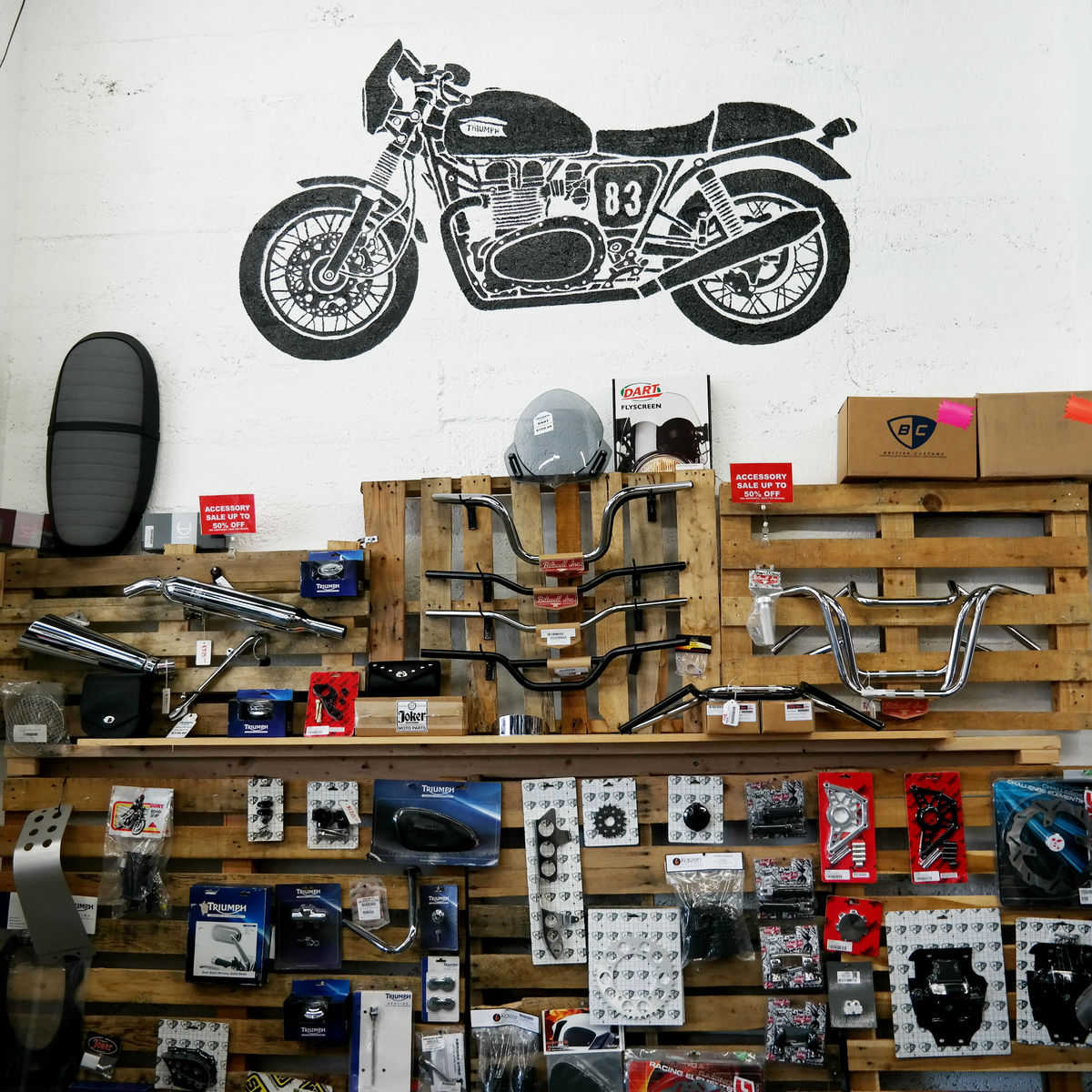Must-Have Motocross Gear: Boost Your Riding Experience Today
Must-Have Motocross Gear: Boost Your Riding Experience Today
Blog Article
Recognizing the Important Parts of a Motorcycle: A Comprehensive Overview for Fanatics
For bike fanatics seeking to raise their riding experience and ensure their bikes run efficiently, understanding the necessary elements of a bike is paramount. Each aspect, from the engine's detailed operations to the important duty of the stopping systems, not only influences efficiency however additionally safety and comfort. This guide will walk through the essential components that every biker must know with, enabling informed options in both maintenance and prospective upgrades. As we begin this exploration, one must ask: just how does each part interact to develop the smooth ride every fanatic seeks?
Engine Parts

The camshaft plays a vital function in regulating the timing of the engine's shutoffs, ensuring the precise opening and closing needed for reliable gas and air consumption, as well as exhaust expulsion. This timing is critical to preserving optimal engine performance and effectiveness. In addition, the carburetor or gas injection system, depending on the bike model, is liable for mixing air with gas in the proper ratio for combustion.
The cooling system, either air or liquid-based, works to maintain the engine's temperature within operational limitations, protecting against getting too hot and ensuring longevity - motocross gear nz. Each component, meticulously designed and integrated, contributes to the seamless procedure of the engine, defining the motorbike's power outcome and general performance
Transmission System
Indispensable to the bike's performance, the transmission system ensures reliable power transfer from the engine to the wheels. This system consists of numerous crucial parts, consisting of the clutch, gearbox, and last drive, each playing an essential duty in equating the engine's power into motion. The clutch, generally run by a hand bar, offers to disengage the engine and involve from the transmission, allowing for smooth gear adjustments and regulated acceleration.
The transmission, often referred to as the transmission correct, contains a collection of equipments that bikers can by hand move via to adjust the bike's speed and torque output. These equipments are organized in a sequence that allows the motorbike to speed up smoothly and keep optimal engine performance throughout different rates. A lot of motorcycles utilize a sequential transmission, calling for the cyclist to move gears in a fixed order.
Braking Systems
While recognizing the transmission system is key to using a motorcycle's power, similarly vital is the capability to regulate and quit that power successfully, which is where stopping mechanisms come into play. Brakes are important for security and efficiency, giving the biker with the required control to navigate various terrains and conditions. Generally, motorcycles include two types of stopping systems: disc brakes and drum brakes.
Disc brakes are more widespread in contemporary motorcycles because of their premium efficiency. They are composed of a brake disc, caliper, and pads. When turned on, the caliper squeezes the brake pads against the spinning disc, transforming kinetic power into warmth, consequently slowing the wheel. This system supplies much better warm dissipation, regular efficiency, and boosted stopping power, especially in damp problems.
On the other hand, drum brakes, though less common, are still located in some bikes. They work by pressing brake footwear versus the inner surface of a drum affixed to the wheel. While normally less effective in heat dissipation and stopping power, drum brakes are less complex and a lot more cost-effective.
Comprehending these braking systems' nuances allows bikers to preserve their bikes appropriately and value the engineering that ensures safe and reliable quiting.
Suspension and Guiding
Suspension and steering systems are crucial components that considerably affect a motorbike's handling and adventure convenience. The suspension system, containing forks at the front and shock absorbers at the back, soaks up road abnormalities, improving security and control. Front forks, typically telescopic or inverted, compress and rebound to alleviate influences, while back shock absorbers maintain tire contact with the road, crucial for grip and security.
Guiding, centered around the handlebars, attaches the cyclist to the motorcycle's directional control. The guiding head bearings guarantee smooth operation, permitting exact maneuverability. Correct alignment and upkeep of these bearings are essential for foreseeable steering feedback and reducing motorcyclist tiredness.
The suspension's adjustability is an additional important facet; preload, damping, and rebound setups permit modification to fit numerous riding styles and conditions. This versatility is necessary for enhancing performance, whether navigating metropolitan roads or dealing with sturdy routes. Technologies like electronic shock absorber supply real-time adjustments, enhancing adventure top quality throughout varied surfaces.

Electric Solutions
After ensuring a regulated and smooth experience through efficient suspension and steering systems, attention transforms to the electrical systems, a pivotal aspect of modern bikes. These systems play a crucial function not only in starting the engine but additionally in powering various components that boost the capability and safety of the motorcycle.
At the heart of a motorbike's electrical system is the battery, which shops electrical power required for beginning the engine and powering auxiliary systems - motocross gear nz. The generator or generator, paired with the rectifier-regulator, makes sure the battery stays billed while the motorcycle is in operation, converting mechanical energy right into electrical energy and keeping voltage degrees
The ignition system, an additional vital part, is in charge of igniting the air-fuel mix in the engine's cylinders. Modern bikes typically make use of a digital ignition system, providing greater efficiency useful site and integrity contrasted motor bike tyre shop near me to traditional systems.
Lighting systems, including headlights, tail lights, and indicators, are additionally crucial, guaranteeing visibility and safety and security for the biker. Added electronic parts such as sensors, control systems, and shows add to sophisticated features like gas injection administration, anti-lock braking systems (ABS), and electronic dashboards, further boosting the riding experience.
Conclusion
A thorough comprehension of a motorbike's necessary elements, consisting of the engine, transmission system, braking devices, suspension, guiding, and electric systems, is indispensable for fanatics aiming to optimize comfort, efficiency, and safety. Mastery of these components permits educated decisions pertaining to upkeep and upgrades, ultimately improving the riding experience. By incorporating this understanding, motorcyclists can ensure their motorbikes operate at peak performance and reliability, consequently making the most of both enjoyment and durability of their vehicles.
For motorbike lovers looking to boost their riding experience and guarantee their bikes run smoothly, understanding the essential elements of a motorbike is paramount.Indispensable to the motorcycle's performance, the transmission system ensures efficient power transfer from the engine to the wheels.While understanding the have a peek at this website transmission system is crucial to harnessing a motorcycle's power, similarly vital is the ability to manage and quit that power efficiently, which is where braking systems come right into play. Commonly, motorcycles include two types of stopping systems: disc brakes and drum brakes.
A comprehensive comprehension of a bike's necessary elements, consisting of the engine, transmission system, stopping devices, suspension, guiding, and electric systems, is important for enthusiasts intending to enhance performance, comfort, and security.
Report this page